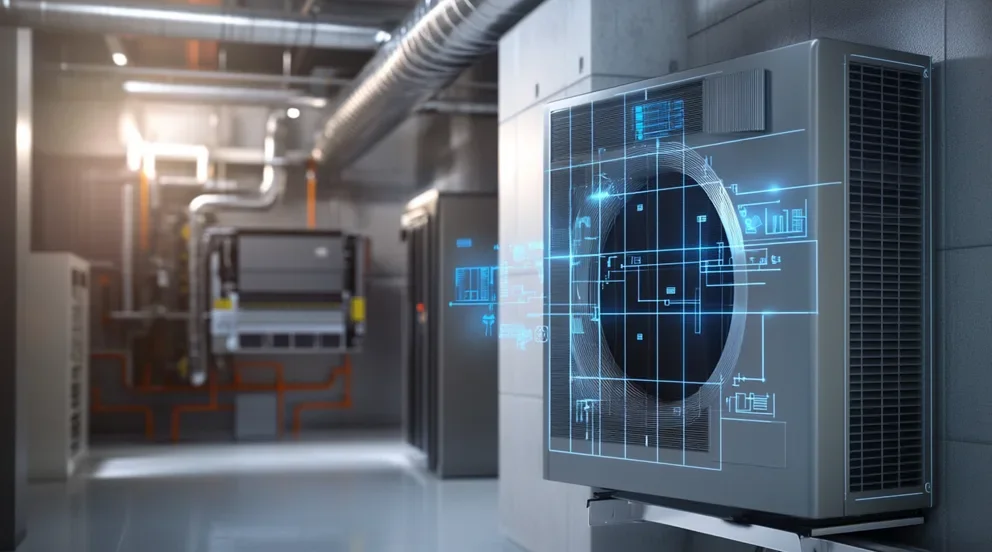HVAC equipment prices refer to the cost associated with purchasing components of Heating, Ventilation, and Air Conditioning (HVAC) systems. These systems are integral for ensuring comfort in residential, commercial, and industrial buildings by controlling indoor climate. The equipment commonly includes outdoor units like condensers and heat pumps, along with indoor furnaces, air handlers, HVAC/ furnaces, chiller.
Prices can vary significantly based on the type, capacity, brand, and technology employed by the equipment. Generally, high-efficiency models command a higher price due to their energy savings and advanced features. Installations that demand complex infrastructure or units with large heating and cooling capacities can also hike up costs, as do additional features such as smart thermostats or zoning capabilities.
It’s imperative to consider the ongoing costs beyond the upfront price, such as maintenance, repairs, fuel consumption, and overall longevity. Homeowners and building managers essentially balance the initial investment with expected energy cost savings and the equipment’s lifespan to gauge its true value.
Content:
Under the vast sky of home comfort systems, navigating HVAC equipment prices is akin to charting a journey through changing weather. The financial forecast involves more than just pinpointing a price tag; it’s an in-depth exploration into the merits and trade-offs of diversified HVAC designs. This guide illuminates the peculiarities of HVAC financial climate.
Taking the leap into HVAC investment often teeters between a pursuit for thrifty deals and an odyssey for supreme quality. As a consumer whirlwind swept into a gust of equipment options, understanding prices becomes a cornerstone in constructing a genuinely cost-effective HVAC strategy. Let’s embark together on the path of demystifying the costs intertwined with warming and cooling domains.
Inaugurating operations for air regulation shouldn’t translate to an unforeseen blizzard of expenses. Systematic preparation moulds the bulwark against fiscal chills. The following exposé promises an armistice with cost qualms, empowering readers to foster a warm alliance with their budget while indulging in suitable havens of comfort crafted by prudent HVAC choices.
Paying through the Nose: How HVAC Competition Influences Consumer Spending
The HVAC industry is a critical marketplace, often capturing substantial consumer spending. A unique dynamic exists, with consumers entangled in complex decisions due to the fierce competition among providers. Customers often feel the squeeze as they navigate through the myriad of options. Each company tries to outdo its competitors, sometimes resulting in escalating costs. One begins to wonder if this battle is inadvertently inflating prices across the board.
A key influence on consumer spending stems from the marketing strategies these companies employ. Aggressive advertising campaigns and promotions are commonplace, which can sometimes mislead consumers. The plethora of deals being offered may appear advantageous, but they also can camouflage unexpected expenses. This marketing fervor nudges customers toward premium services, often unnecessary, leading to heftier outlays.
Consumers are increasingly educated about energy-efficient systems, thanks to widespread information availability. They desire units that promise long-term savings, even if the initial investment is high. Heating, Ventilation, and Air Conditioning (HVAC) companies capitalize on this trend, often positioning their top-tier options as the most cost-effective over time. This perceived value can make consumers dig deeper into their pockets.
An additional layer to this financial puzzle is the after-sales service and warranties offered. Companies compete not only on product price but also on the service experience and maintenance costs. The paradox here is that while one aims for preventative expenditure to mitigate future costs, it can lead to spending more upfront. Consumers are compelled to evaluate both immediate and long-term financial ramifications.
In conclusion, the competitive environment in the HVAC sector has a significant impact on how much consumers end up spending. While competition can drive innovation and higher standards, it often also leads to increased costs for the consumers. As a result, savvy homeowners must tread carefully, balancing the complexities of HVAC competition with their desire for favorable pricing and reliable, efficient climate control solutions.
Feeling the aPull: Rise in Competition between HVAC Companies Challenges Prices
As competition stiffens in the HVAC industry, companies vie for market share through slashed pricing. This rivalry theoretically benefits consumers, promising high-quality services at lower rates. Yet, the intricacies of service agreements often hide true costs beneath appealing upfront prices. Discerning customers grapple with deciphering the genuine distinctions in value versus the long-term financial impact of their choices.
Technological advancements surge in the HVAC arena, with manufacturers racing to outperform each other. The continuous influx of cutting-edge features is dazzling but may push prices upward. Customers enticed by modern tech might unwittingly contribute to a price bubble. Hence, it’s crucial to separate necessity from luxury to circumvent overspending on superfluous traits.
The rise of heating and cooling needs due to shifting climate patterns boosts the importance of HVAC systems. Companies respond with a breadth of service plans designed to cater to emergent consumer demands. The diversity in options can be bewildering, causing individuals to foster unintentional biases toward costlier alternatives. People increasingly weigh the environmental impact alongside the comfort modern HVAC systems provide.
The landscape of customer service plays a pivotal role in framing overall costs. Outstanding support might command a higher price tag, prompting questions on whether to prioritize quality or affordability. Retaining clients has become as critical as acquiring new ones, and this begets innovative service packages with concealed costs concealed beneath the surface.
To wrap it up, the escalation of competition among HVAC companies directly affects the price landscape, striving for the sweet spot between affordability and quality of service. Consumers must navigate through a maze of options, technology-driven features, and service quality, all of which hold sway over their final expenses. Critical analysis and informed decisions are essential to avoid being swept up in the rivalry-induced pricing whirlwind.
Bottle Wars of Climate Control: Exploring Heat Wave Economics Through HVAC Pricing
The HVAC industry has become an economic battleground, particularly during seasonal heat waves. Companies in this sector experience a boom, as consumers search desperately for respite from the blistering heat. This surge in demand leads to intense competition, with HVAC firms trying to tempt clientele through compelling pricing strategies. However, beneath these tactics lies a nuanced economic reality worth unpacking.
During extreme temperatures, urgent HVAC system installations or repairs become a frequent ordeal. Companies aware of this urgency leverage the situation, resulting in price fluctuations. Quick decision-making may serve immediate comfort needs, but could potentially burden consumers financially in the long run. Wise homeowners will carefully weigh their options, avoiding hasty purchases prompted by discomfort.
The economic principles of supply and demand are clearly at play in the HVAC market during peak seasons. As the mercury rises, the value proposition of climate control systems becomes irresistible. Suppliers may seek to maximize profits, sometimes inflating prices. This practice spotlights the importance of understanding market dynamics to secure fair pricing.
Sizeable investments in marketing by HVAC firms during heatwaves are common, as capturing the attention of overheated consumers is lucrative. These marketing expenses inevitably permeate product pricing, subtly increasing consumer costs. This underlines the hidden aspects of pricing strategies, which may not always align with actual product value.
In essence, the HVAC pricing wars during heatwaves offer a window into the economics of climate control. Supply chain factors, marketing investments, and on-the-fly consumer decisions contribute to a complex price narrative. As the industry braces for fluctuating demand, intelligent consumers can navigate the price wars by staying informed and prioritizing affordability without compromising on necessity.
Uncovered: How Rivals in HVAC Industry Dictate Your Expense
The HVAC industry is rife with competition, a veritable chess match dictating consumer expenses. Strategic moves by industry players can unexpectedly drive up household budgets. The key to understanding this intricate game lies in examining the methods employed by companies jockeying for dominance. These rivalries shape the HVAC landscape, influencing both quality and cost.
Market penetration tactics such as undercutting competitors’ prices can lead to temporary consumer gains. Yet, this poses questions about the sustainability of such artificially low prices. Once a firm has established a robust client base, it has the potential to pivot, hiking up prices. Thus, the initial savings for consumers can morph into long-term expenses.
Innovation in HVAC technology is frequently propelled by rivalries. While this perpetual innovation brings improved product efficiency and environmental benefits, it can also inflate costs. The premium prices attached to cutting-edge systems reflect development investments but can strain the average homeowner’s finances.
HVAC companies also compete on the breadth and flexibility of their service agreements. While choice is beneficial, it complicates decision-making for consumers. There often exists a delicate balance between the perceived value of extensive service plans and the practicality of more straightforward, less costly options.
In summary, the tug-of-war between HVAC competitors has a considerable impact on your wallet. These rivalries set the stage for fluctuating prices, innovation-dictated cost increases, and convoluted service offers. Consumers who peek behind the industry’s curtain gain leverage, wielding the knowledge necessary to make cost-effective decisions amidst the competitive fervor.



